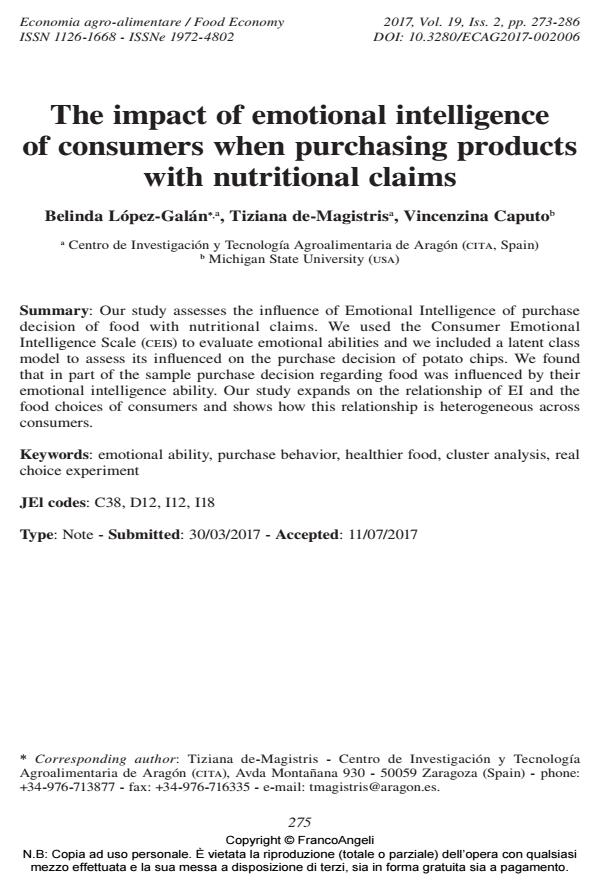The impact of emotional intelligence of consumers when purchasing products with nutritional claims
Titolo Rivista ECONOMIA AGRO-ALIMENTARE
Autori/Curatori Belinda López-Galán, Tiziana de-Magistris, Vincenzina Caputo
Anno di pubblicazione 2017 Fascicolo 2017/2
Lingua Inglese Numero pagine 14 P. 275-288 Dimensione file 150 KB
DOI 10.3280/ECAG2017-002006
Il DOI è il codice a barre della proprietà intellettuale: per saperne di più
clicca qui
Qui sotto puoi vedere in anteprima la prima pagina di questo articolo.
Se questo articolo ti interessa, lo puoi acquistare (e scaricare in formato pdf) seguendo le facili indicazioni per acquistare il download credit. Acquista Download Credits per scaricare questo Articolo in formato PDF

FrancoAngeli è membro della Publishers International Linking Association, Inc (PILA)associazione indipendente e non profit per facilitare (attraverso i servizi tecnologici implementati da CrossRef.org) l’accesso degli studiosi ai contenuti digitali nelle pubblicazioni professionali e scientifiche
Our study assesses the influence of Emotional Intelligence of purchase decision of food with nutritional claims. We used the Consumer Emotional Intelligence Scale (ceis) to evaluate emotional abilities and we included a latent class model to assess its influenced on the purchase decision of potato chips. We found that in part of the sample purchase decision regarding food was influenced by their emotional intelligence ability. Our study expands on the relationship of EI and the food choices of consumers and shows how this relationship is heterogeneous across consumers.
Parole chiave:Emotional ability, purchase behavior, healthier food, cluster analysis, real choice experiment
Jel codes:C38, D12, I12, I18
Belinda López-Galán, Tiziana de-Magistris, Vincenzina Caputo, The impact of emotional intelligence of consumers when purchasing products with nutritional claims in "ECONOMIA AGRO-ALIMENTARE" 2/2017, pp 275-288, DOI: 10.3280/ECAG2017-002006